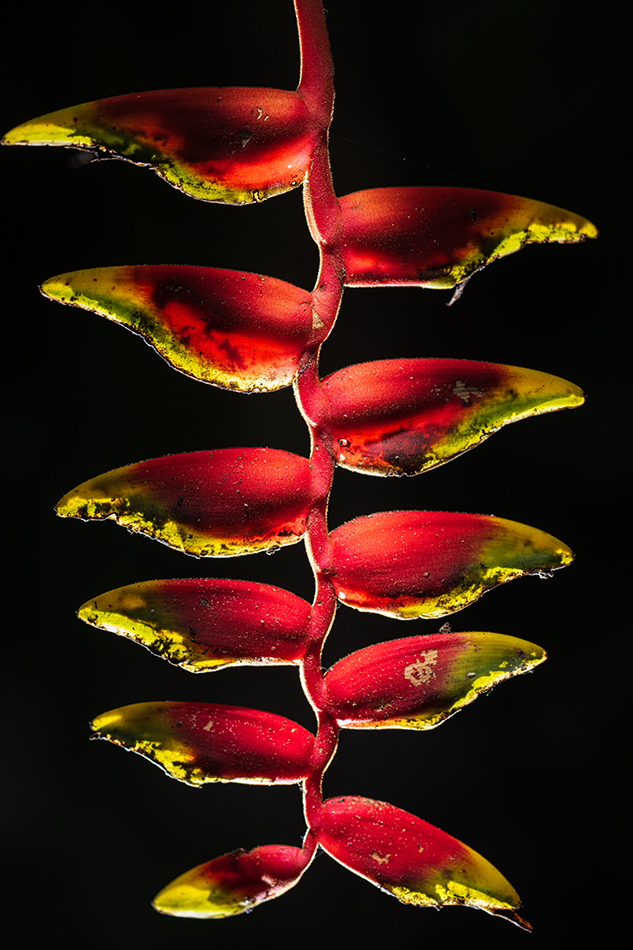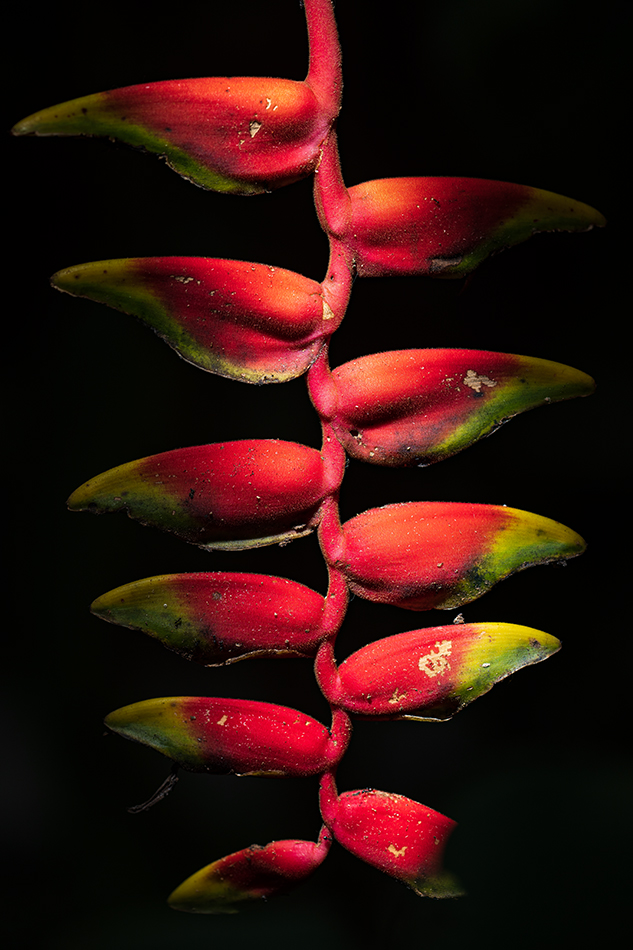
Costa Rica. Osa Peninsula.
Spring is here, and the flowers are blooming. I really enjoy macro photography this time of year, especially flowers. I photograph a lot of flowers using available light with reflectors, but sometimes I will use flash as well. It really comes down to the look I want. Last week in Costa Rica our hotel had beautiful Heliconia, and the flower was very unique. First, it was often in low light locations, so flash naturally came to mind to add some specular highlights. Next, it had a strong graphic shape, one that would really come to life using flash. Lastly, the Heliconia often was hanging with nothing behind it. So I could easily control the background if I used flash, and wouldn’t have to worry about my light illuminating other distracting elements.
My flash of choice is my Nikon SB5000 used in conjunction with a WR-R11B wireless transmitter on my Z9. I generally start in TTL flash mode, and adjust power if my flash is off on exposure. For my Heliconia image I used Manual mode in the camera, and set my exposure such that background would be completely black. The only thing that would show up in my image was what was illuminated by my light.

Costa Rica. Osa Peninsula.
How to light this flower? To start I knew just aiming a speedlight at it wasn’t going to work. I loved the symmetry and ‘wings’ of the flower. I wanted to add a streak of light right down the middle stem, but not fully hit the yellow wing edges. To accomplish this I attached a Rouge Flash Bender shaped into a snoot. The snoot would focus my flash into a narrow beam of light. The image above is using one flash with snoot.
But I wanted to add some more dimension to the shot. How about some highlights on the underside the ‘wings’? To do this right, I would add these highlights from behind the flower since I didn’t want to illuminate the front anymore. This was turning into a two flash setup, except I had one flash. My solution was to use multiple exposure using one flash.

Here is the menu in camera on a Z7II, similar to what multiple exposure menus should look like on most camera systems. I chose two images with an average overlay blend mode. The magic is the camera would blend both flash images together in camera. I didn’t need to do any calculations. My first shot was using the snoot down the stem, and then my second shot was illuminating the Heliconia from behind. I took the snoot off for the second shot so all of the flower would be back lit. The final image is at the top of this post.
Flash is a powerful tool in any type of photography, including nature and macro. It gives the photographer another option and tool to bring their vision to life. When I saw this Heliconia, I didn’t see the flower. I saw a beautiful color and graphic shape that needed some highlights and dimension to create an interesting image. If you are interested in this technique, or the incredible photography in Costa Rica, we just adding another trip. Click on this link to send us a message to be on the list…trip will be April 2024. Have a great weekend!